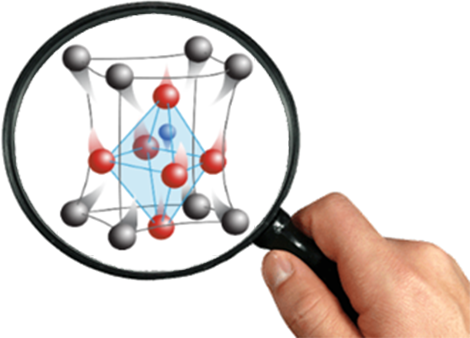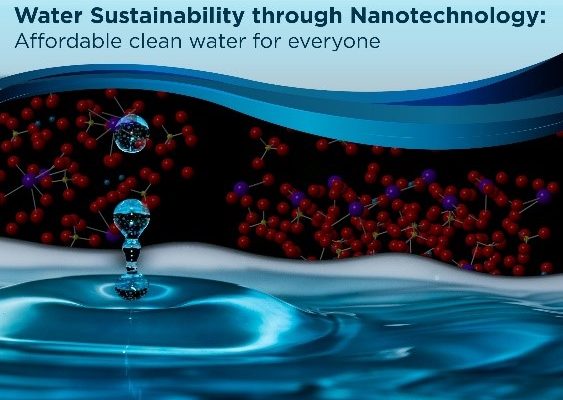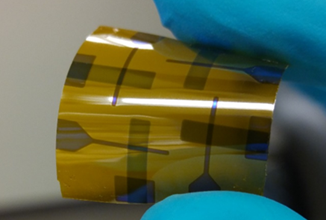Research
The arrangement of atoms is central to the performance of materials for domain applications as diverse as aerospace, medical, and consumer electronics. Advancing materials innovations requires the ability to identify atomic arrangements in matter, a science known as crystallography. History has repeatedly taught us that advances in crystallography have led to significant societal impacts – from the structure of DNA to carbon nanomaterials and quasicrystals. Looking forward, the National Academy of Engineering’s “Grand Challenges” for the next century rely heavily on understanding atomic structures and their interactions with their environment, for example by making solar energy economical, managing the nitrogen cycle, and providing access to clean water. However, our ability to “see” the real atomic structure of matter (i.e., local chemistry, atomic positions, arrangements, and bonding) in three-dimensions, across nanometer (10-9 m) and larger length scales, and during materials’ performance in real applications is surprisingly limited.
Recently, a new and evolving generation of atomically-sensitive scientific instruments using X-rays, neutrons, or electrons has opened new opportunities for next-generation science at atomic length scales. By leveraging the new opportunities presented by advances at modern light and particle sources, the vision of our research program is to: i) develop new crystallographic methods that are used by researchers throughout the world to study complex and important problems in the structural sciences, and ii) discover and develop new physical insights from exemplary experiments and materials that will radically advance domain-specific problems. Products of our research are the methods, tools, approaches, algorithms, and code that underpin the experiments as well as representative materials examples – i.e., both the tools for scientific inquiry and meaningful results that demonstrate their use.

Our group was established by developing new methods for determining how the Ångström-scale (10-10 m) to micro-scale (10-6 m) structures in the important class of piezoelectric materials evolve during their application, i.e. while excited with dynamic electric fields. Piezoelectric materials are used in a variety of advanced functional applications including microelectromechanical systems, energy harvesting devices, piezotronics, and ultrasound. Many piezoelectric materials have elusive structures due to complex chemical and positional order/disorder and vanishingly small atomic displacements that underpin their properties. Using time-resolved, high-energy X-ray Bragg diffraction at a synchrotron source, our research group pioneered efforts to understand the existence and interplay of electric-field-driven mechanisms in this complex class of materials. For example, in 2012 (Phys. Rev. Lett.), we showed how mobile crystallographic defects known as ferroelectric/ferroelastic domain walls interact with fixed defects called pinning centers under applied electric fields. This built upon earlier work our earliest research contributions that established quantitative methods to describe the extent of mobile domain wall motion. In 2014 (Adv. Funct. Mater.), we showed how grain size in polycrystalline materials affects the properties in a classical piezoelectric, barium titanate. This contribution, built upon 60 years of prior work, is experimental proof of the central role of domain wall motion in the performance of piezoelectric materials.

Another area of our group’s work involves the development of lead(Pb)-free piezoelectric materials that are more environmentally and biologically compatible and meet new European legislation. Our group produced original work in determining the complex structure of one of the most promising Pb-free compounds, Na1/2Bi1/2TiO3 (NBT), using data from experiments involving neutrons, X‑rays, and electrons. As evidence of our group’s contributions in this area, we led a review article on this topic in a special issue of the MRS Bulletin (2018) dedicated to Pb-free piezoelectric materials.
One of the techniques our group employed in early years to understand NBT involved the measurement of so-called “total scattering” to look at features in the X-ray scattering pattern that are normally too weak to quantify using traditional approaches; from this information, a pair distribution function is calculated that describes information about the atomic-scale structure. In 2015 (Sci. Reports), our research group reported our development of a new way of analyzing this total scattering data using orientation-dependent sensitivity; this new approach allows researchers to see the response of the atomic-scale structure to electric fields. For the first time, we elucidated the critical role of how certain cations, e.g. Bi3+, behave under electric field and contribute to the properties of NBT.

Crystallographic methods are broadly applicable across many disciplines and we embrace the interdisciplinary innate to our research; our ongoing work leverages the collaborations we’ve established with disciplines as diverse as mechanical, chemical, environmental, nuclear, and civil engineering, statistics, mathematics, computer science, and even the social sciences. In 2014, we initiated a new, interdisciplinary collaboration with statisticians to advance the data science of materials characterization. In 2016 (Sci. Reports), we reported a new statistical method based on Bayesian inference to analyze diffraction patterns, providing a modern statistical method to supersede the 50-year-old materials characterization routine known as Rietveld refinement. The new method provides researchers with a new probabilistic description of crystal structure. The probabilistic outputs of this new approach can identify changes in materials that are invisible to the earlier approaches – e.g., signatures in the data indicating small changes in phase and innate material heterogeneities induced during processing. Because the approach is broadly applicable to any researcher currently using the Rietveld method, there is potentially tremendous impact to fields as diverse as ceramics, structural alloys, biomaterials, and protein crystallography.
Our newest work broadens our reach into other domain-specific problems. In the past few years, we have made new contributions in the areas of energy-storage materials, photocatalysis, flexible electronics, graphene, and even nanomaterials for water treatment. In the area of water treatment, we led a large seed grant funded by RTI International from 2017-2019 to study the mechanisms by which nanomaterials recover nutrients from water sources. Our research enables us to “see” physical processes occurring at Ångström-to-nanometer length scales, providing a unique ability to elucidate and control the mechanisms of nutrient recovery. By advancing crystallographic methods and their applications in new domains, our group makes important contributions to solving society’s grandest challenges – from creating eco- and bio-friendly piezoelectric materials to advancing a sustainable phosphorus life cycle and purifying water sources.
Our perspectives on collaboration: As an integral component of our research program, we participate in numerous local, national, and international collaborations. Strong, active collaborations enable our students to engage with students, scientists, and faculty at NC State and other institutions. This approach promotes the sharing of different ideas and problem solutions that originate from individuals of different backgrounds and experiences. These collaborations serve as an educational component for students, enable a broad impact for the research, and provide an integrated and synergistic contribution to the research activities.
The U.S. national laboratories are a significant national financial and intellectual investment and offer unique opportunities for students to work with leading scientists and engineers on problems of national relevance and be immersed in a larger interdisciplinary research community. To promote this type of interaction, we collaborate with several national laboratories on different research projects. For example, several students and postdoctoral scientists regularly complete neutron diffraction measurements at Oak Ridge National Laboratory (ORNL) and synchrotron X-ray diffraction measurements at the Advanced Photon Source at Argonne National Laboratory.
These focused research initiatives and local, national, and international collaborations enhance the depth and breadth of our research. The research program itself provides meaningful educational experiences for students and leads to substantial contributions to science, technology, and industry.

